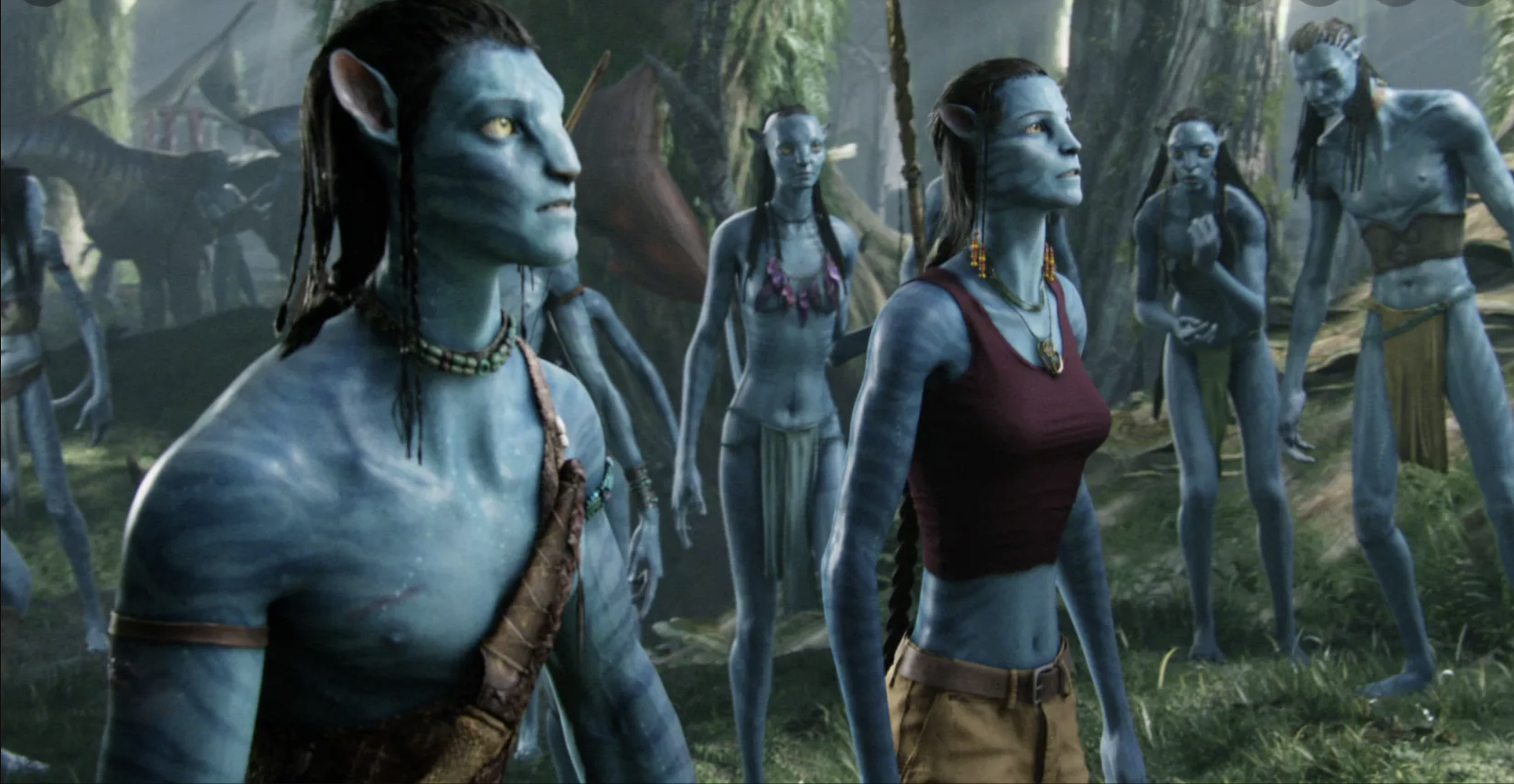2009'S AVATAR IN 2022
Directing: B-
Acting: B
Writing: C+
Cinematography: A-
Editing: A
Special Effects: A-
When I first saw Avatar in 2009, I was impressed enough with it that not only did I give it an A-, by the end of the year I put it on my annual top 10, placing it at #10.
With the film’s first sequel finally coming to theaters this December, the first film is once again in theaters now, this time only available in 3D—in 2009, I went to see it first in 3D, then again in 2D, and very much preferred the latter. I suspect I would feel the same way now, even though I must say, when viewed superficially as nothing more than blockbuster entertainment, that film remains a spectacular specimen. I cannot deny that I was wowed by the effects, the visual inventiveness, and how imaginative it was—possibly even more than I was thirteen years ago, when I spent an inordinate amount of time discussing the uselessness of 3D in my review.
And now, I am doing something I never did before: re-reviewing a movie in re-release many years later. My rule has always been against this because, well, I already reviewed it. Except in this case, there is the unusual burning question of how well the film holds up after all this time, both because of the amount of time that has passed, and the massive cultural shifts in the zeitgeist in that time, particularly when it comes to race.
There is no question that the “white savior” concept came up in criticism of this film in 2009, but I am somewhat disappointed in myself not to have mentioned it at all in my original review. In the year 2022, for anyone with any concerns about social justice at all, James Cameron’s narrative in this film certainly sits uncomfortably—and for many white people, less comfortably now than it did in 2009.
James Cameron is another massively successful straight white man, after all, and certainly there will be some who read my commentary now as just shitting on straight white men. It cannot be denied, however, that his gender and race informs the story he is telling here, about a white man (Jake Sully, played by Sam Worthington) who enters the “indigenous humanoid” population of a moon called Pandora, gets accepted as one of them, and then leads them in successful resistance to the “white people.” A lot of the problematic characterizations of this indigenous population are more glaring now, and further reading comes recommended. There is plenty out there about this if you make the slightest effort to look for it; I am hardly alone in thinking about these things.
One wonders whether Cameron will take any of these frankly fair criticisms to heart in the upcoming sequel. I have my doubts, but also I suppose it’s not impossible. The internal struggle I have with the original Avatar now is how much I genuinely enjoyed it. And surely, plenty of people might sensibly ask why we can’t just give ourselves over to blockbuster entertainment and simply be entertained. I can tell you this much: if you do that with Avatar, you absolutely will not be disappointed. Cameron’s script may be packed with stereotypes and tropes, but it is also incredibly tightly constructed, and the film is riveting from beginning to end. I just also had the space in my head for recognition of its many faults, some more subtle than others. I wasn’t even as bothered by the 3D this time around; the film is so wildly entertaining that you quickly forget about the sometimes awkward visual experience.
Would I recommend that you see this in the theater now, again? Only if you are a purist regarding the cinema experience: there is no question the stunning visuals work better in a theater, no matter how big your home TV screen is.
Also, there has been regular mention over the years that Avatar has the distinction of being the only film ever to become the biggest box office earner of all time which people don’t really still talk about, and no one can even remember what the characters names were. Sigourney Weaver plays Grace, the doctor who heads the “Avatar” program that links humans to hybrid Na’vi that can breathe and function in the local environment. Zoe Saldana plays Neytiri, the Na’vi woman Jake falls in love with. Michelle Rodriguez plays Trudy, a rebellious company employee. Stephen Lang plays Colonel Miles Quaritch, the man who becomes the very Cameronian villain of the film. Giovanni Ribisi is Parker, the corporate shill intent on ruining the Na’vi land in pursuit of the idiotically named “unobtanium.” Very seldom are any of these people’s names actually said onscreen.
Setting the problematic narrative aside, the reason to see Avatar remains its groundbreaking special effects. The Na’vi are CGI rendered in a way that precludes any genuine photorealism, and yet their environment on Pandora is so colorful and inventive, it is an unusually immersive experience. It feels very much like a fully realized world, wholly separate from the one we live in. Cameron simply grafts a very Dances with Wolves story onto it. I spent a lot of time not minding that so much, thinking maybe I should mind it more, and escaping into a science fiction fantasy. That descriptor can be applied in more ways than one, and which angle you take on it is really up to you. But, even the most spectacular entertainment is not above a more deeply critical look.
A Series of Unfortunate Events, Rendered Spectacularly
Overall: B+

